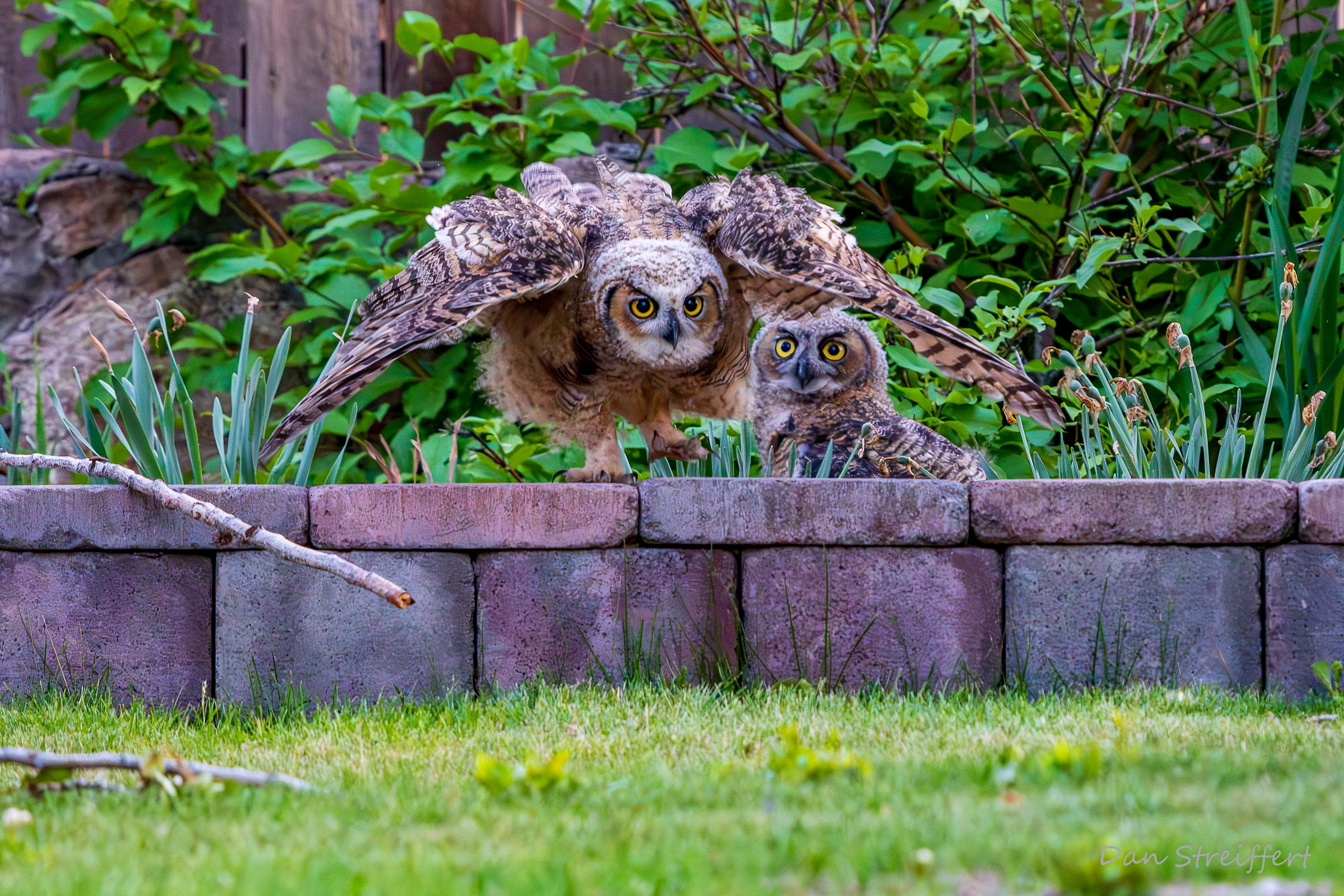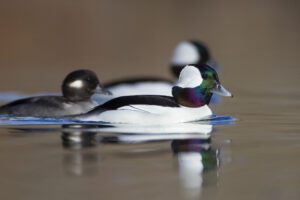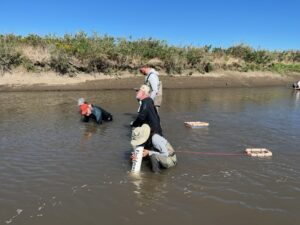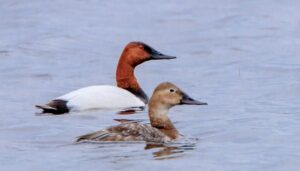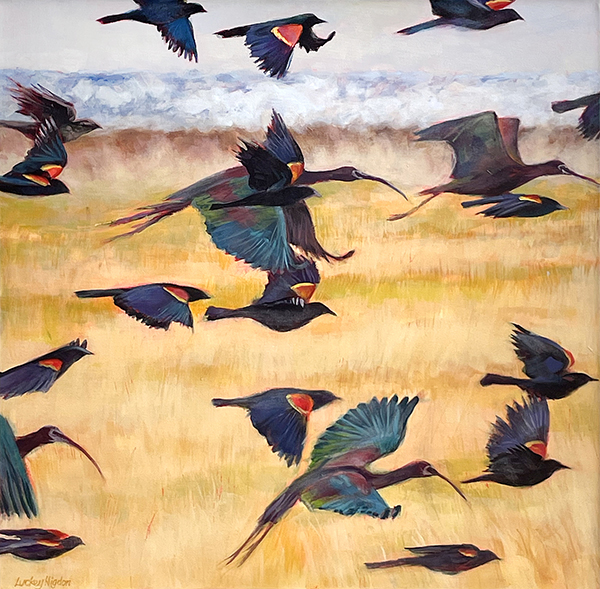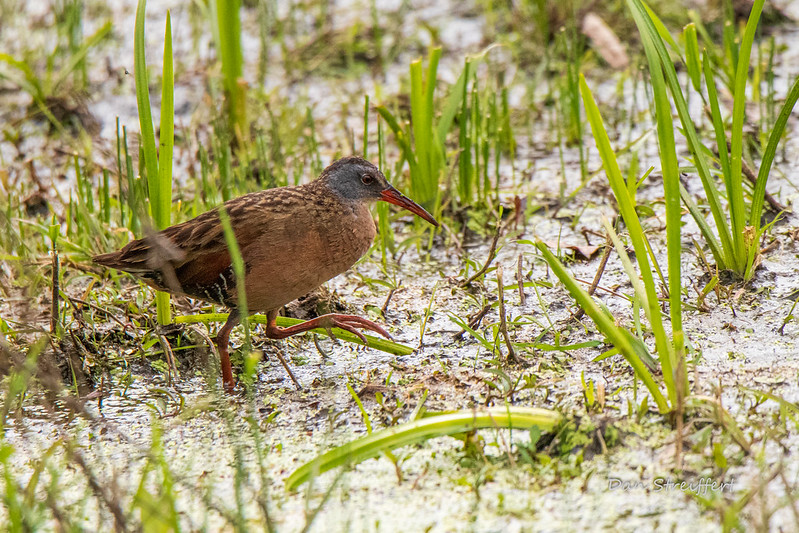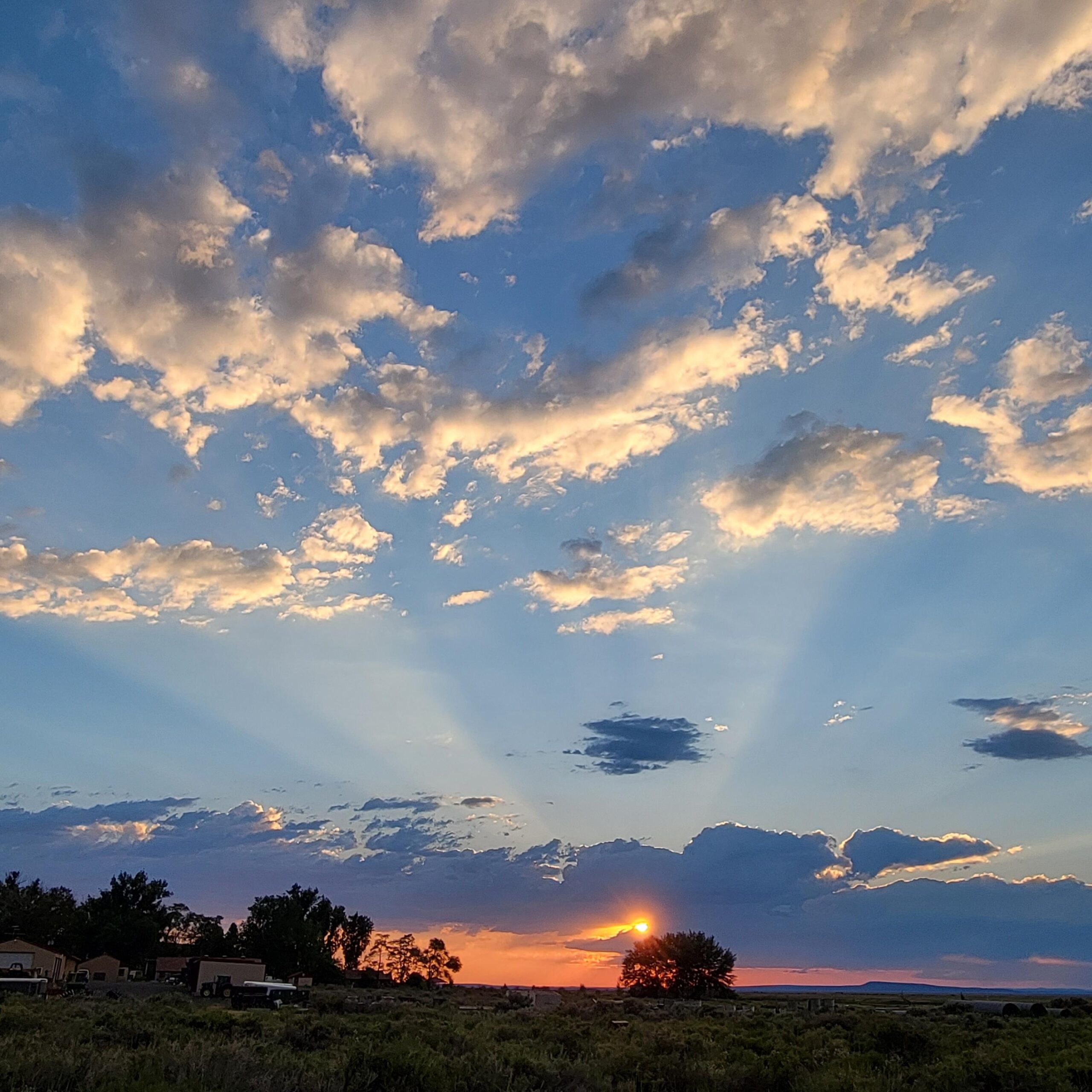Written by Wren Hudgins, FOMR Volunteer June 2024
Photo of fledgling great-horned owls by Dan Streiffert
When I go birding, I’m usually passing through places. I’m here one day but then moving on the next. To be sure, there are advantages to this, such as everything is novel, you can experience perhaps a wider variety of habitats and maybe boost your chances of seeing more bird species. But a disadvantage is that you have no sense of the passage of time.
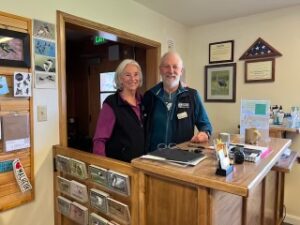
So, my wife and I decided to volunteer for all of June 2024 in the Malheur National Wildlife Refuge. The generous volunteer work schedule
allowed us plenty of time to explore the region but it also allowed us to experience the same places over a month of time. Within 100 yards of the Crane’s Nature Center and Shop, where we worked, there were 5 species of birds with moms either sitting on eggs or feeding hatchlings. Those species were Red Tailed Hawk, Great Horned Owl, Say’s Phoebe, Barn Swallow and Black Chinned Hummingbird. We watched as California Quail parents led around a covey of perhaps 15 babies which grew from about 1.5” tall to 5”, in a period of 3 weeks. A little further away we located nests of Golden Eagles and Ferruginous Hawks. We watched as these chicks grew quickly to near adult size, saw them experimenting with their wings and increasing strength, and eventually fledging.
Birders came into the shop reporting new families of Short Eared Owls and Burrowing Owls. We weren’t lucky enough to see those families but we did see the adults. Of course the babies were not limited to birds. Deer are attracted to the seed feeders and nectar that we put out daily and one mom with two fawns came by often enough that we could observe fawn development over time. One morning on the Center Patrol Road I came across a family of long tailed weasels. There are certainly plenty of baby rabbits and Belding’s Ground Squirrels as well.
Avid birders coming in to the shop were very excited that we could tell them where we had seen certain species or where the nests were located. Beginning birders and even non birders get impressed with a Great Horned Owl “chick” which is 18” tall. I’m sure our bird location information, in addition to creating goodwill, has had a beneficial effect on donations and memberships to the Friends of Malheur NWR which we were volunteering for.
Another benefit of staying in one place has been the chance to observe patterns such as “feeder dominance”. We have learned that the bullies on the feeder are the Yellow Headed Blackbirds, even over their Red Winged cousins and the Eurasian Collared Doves which are larger in size.
Checking observed birds off on a checklist is not only quite enjoyable but also a welcome ongoing intellectual challenge. But staying in one place for a month or more is a different experience, affording one the opportunity to observe behavior and growth over time. So, knowing something about bird growth and behavior is satisfying in a different way from just seeing the bird.
In conclusion I’d like to share our Harney County bird list for the month of June 2024 in which we saw 105 species!
6/2024: Harney County (HC)
- Canada Goose HC
- Wood Duck HC
- Cinnamon Teal HC
- Northern Shoveler HC
- Gadwall HC
- American Wigeon HC
- Mallard HC
- Northern Pintail HC
- Redhead HC
- Ring-necked Duck HC
- Lesser Scaup HC
- Bufflehead HC
- California Quail HC
- Wild Turkey HC
- Greater Sage-Grouse HC
- Ring-necked Pheasant HC
- Chukar HC
- Pied-billed Grebe HC
- Eared Grebe HC
- Western Grebe HC
- Clark’s Grebe HC
- Rock Pigeon HC
- Eurasian Collared-Dove HC
- Mourning Dove HC
- Common Nighthawk HC
- White-throated Swift HC
- Black-chinned Hummingbird HC
- Rufous Hummingbird HC
- American Coot HC
- Sandhill Crane HC
- Black-necked Stilt HC
- American Avocet HC
- Killdeer HC
- Semipalmated Plover HC
- Long-billed Curlew HC
- Wilson’s Snipe HC
- Wilson’s Phalarope HC
- Willet HC
- Dunlin HC
- Bonaparte’s Gull HC
- Franklin’s Gull HC
- California Gull HC
- Forster’s Tern HC
- American White Pelican HC
- Great Egret HC
- Great Blue Heron HC
- White-faced Ibis HC
- Turkey Vulture HC
- Golden Eagle HC
- Northern Harrier HC
- Sharp-shinned Hawk HC
- Cooper’s Hawk HC
- Bald Eagle HC
- Red-tailed Hawk HC
- Ferruginous Hawk HC
- Great Horned Owl HC
- Burrowing Owl HC
- Short-eared Owl HC
- Red-headed Woodpecker HC
- Northern Flicker HC
- American Kestrel HC
- Western Wood-Pewee HC
- Willow Flycatcher HC
- Say’s Phoebe HC
- Western Kingbird HC
- Eastern Kingbird HC
- Warbling Vireo HC
- Loggerhead Shrike HC
- Black-billed Magpie HC
- American Crow HC
- Common Raven HC
- Horned Lark HC
- Bank Swallow HC
- Tree Swallow HC
- Violet-green Swallow HC
- Northern Rough-winged Swallow HC
- Barn Swallow HC
- Cliff Swallow HC
- Rock Wren HC
- Canyon Wren HC
- House Wren HC
- European Starling HC
- Sage Thrasher HC
- Western Bluebird HC
- Mountain Bluebird HC
- American Robin HC
- Cedar Waxwing HC
- House Sparrow HC
- House Finch HC
- Brewer’s Sparrow HC
- Savannah Sparrow HC
- Song Sparrow HC
- Yellow-headed Blackbird HC
- Bobolink HC
- Western Meadowlark HC
- Bullock’s Oriole HC
- Red-winged Blackbird HC
- Tricolored Blackbird HC
- Brown-headed Cowbird HC
- Brewer’s Blackbird HC
- Common Yellowthroat HC
- Yellow Warbler HC
- Yellow-rumped Warbler HC
- Black-throated Gray Warbler HC
- Lazuli Bunting HC

